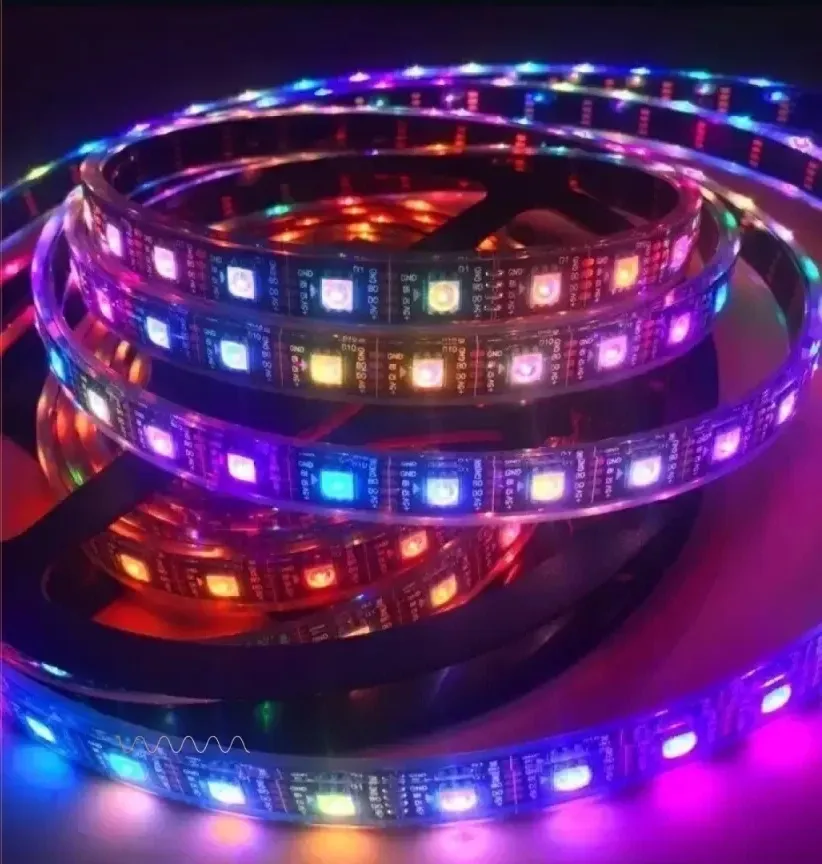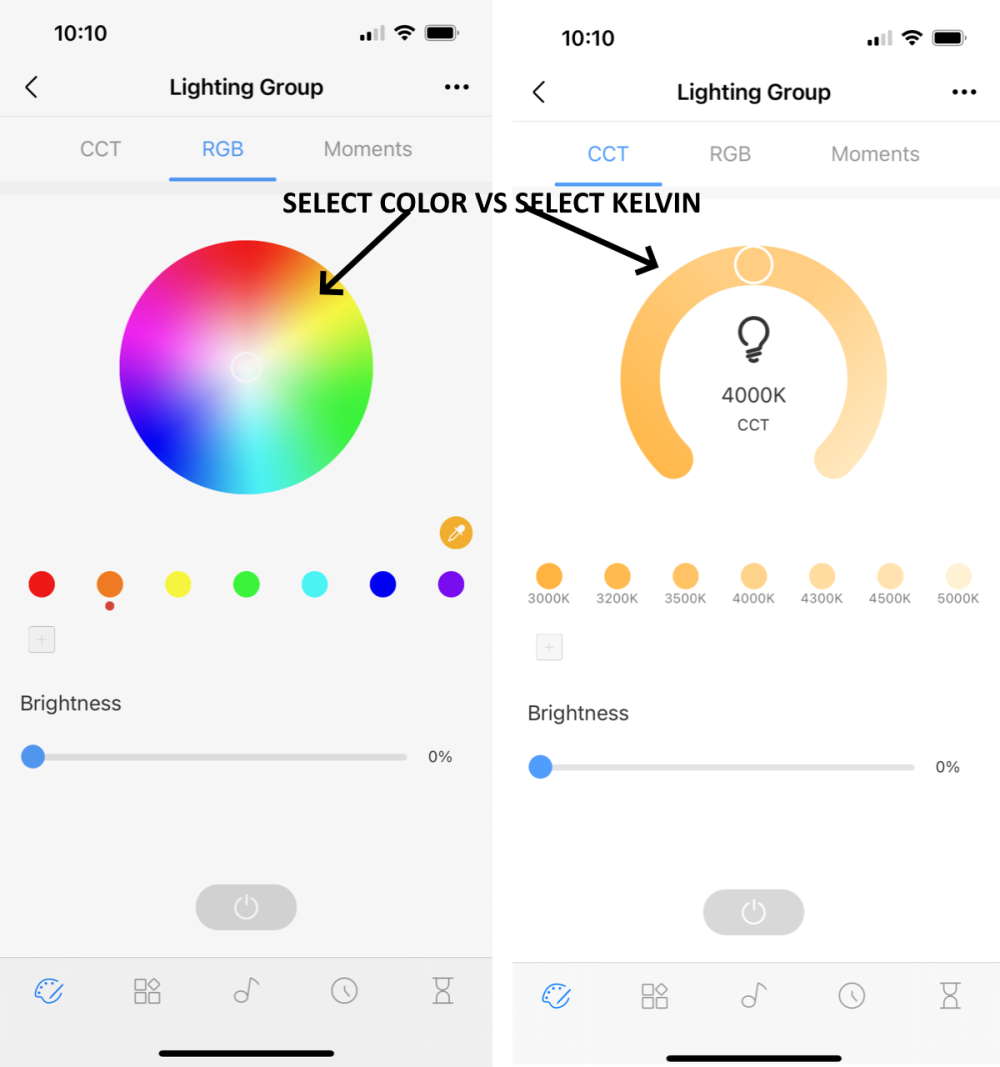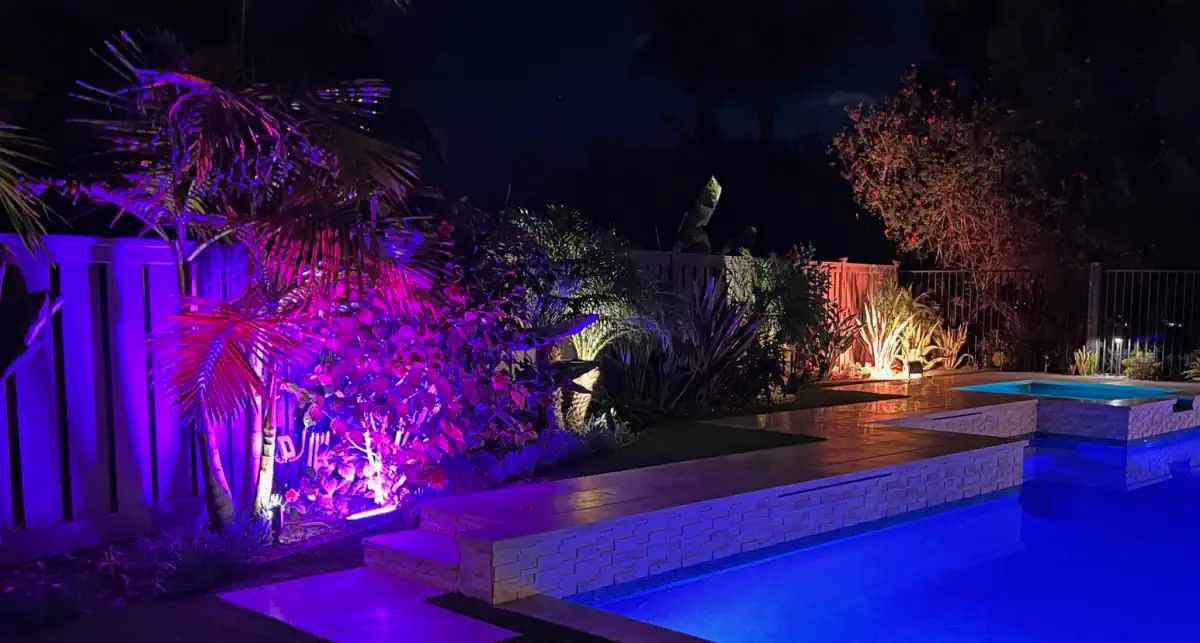RGB and RGBW LED lights are the two most common lights in our daily life. Perhaps you already know that the biggest difference between the two is that RGBW can emit additional white light. But in addition to this, there are other differences between RGB and RGBW that make them suitable for different application scenarios. Read this article to see which one is better for you, RGB or RGBW!
What do RGB and RGBW stand for?
RGB lamps contain three LED chips that emit three primary colors of red, green and blue light. Its integrated circuit (IC) regulates the current passing through these three RGB LED chips to change their luminous intensity. As the mixing ratio of these three primary colors changes accordingly, they can produce a variety of changing colors. It can synthesize all colors within the three primary color triangle - about 16.78 million colors, including white light.

The luminous intensity of the three primary colors of light is different, even when the rated operating current is the same. To obtain white light, each color of light requires a different driving current. However, this current control has defects, and the relationship between current and luminous intensity is not always linear. Therefore, sometimes it is impossible to generate perfect white light. In addition, the white light produced by RGB lamps is usually dim.
Therefore, RGBW lamps were invented, which have additional white light chips. Four-color RGBW lamp beads can provide purer and brighter white light.
RGB vs. RGBW: 6 key differences
RGB and RGBW controllers
Control RGB and RGBW lamps with remote controls
RGBW controllers have more color channels than RGB controllers because RGBW lamps have four chips while RGB lamps have three. RGBW controllers can control RGB LED strips and usually have higher power ratings than RGB controllers.
RGB and RGBW controllers work on the principle of PWM (pulse width modulation) signals. In RGB controllers, PWM is used to adjust the brightness of the three color channels of red, green, and blue. In RGBW controllers, PWM is used to adjust the brightness of the four color channels of red, green, blue, and white.
The input of an RGB controller usually comes from commands operated by users through buttons or knobs. These commands are processed to generate control signals. The control signals generate PWM modulated signals through circuits and are then sent to RGB lamps through output interfaces.
By adjusting the duty cycle (i.e., the ratio of the switching time to the period) of the PWM modulation signal of each channel, the controller can change the brightness of the RGB lamp. For example, by increasing the duty cycle of the red channel, the red can be made brighter. When the PWM signal strength of the red, green, and blue channels is equal, the lamp emits white light.
Control RGB and RGBW lamps using the DMX 512 system
Each output circuit in a DMX control system can support up to 512 channels. The maximum number of devices that can be controlled by each port depends on the number of channels occupied by each device. Since RGB lamps have 3 chips and RGBW lamps have 4 chips, one DMX 512 port can connect 512/3≈170 RGB lamp beads and 512/4=128 RGBW lamp beads respectively.
Brightness
The white light of the RGBW lamp can be emitted independently by the white light LED chip, not relying on the combination of red, green, and blue light. This makes it emit brighter white light.

Color temperature
RGB LEDs produce white light by combining equal amounts of red, green, and blue light, and their color temperature is higher, usually in the range of 5000K-6000K. On the other hand, RGBW LEDs are able to produce warmer white light with a color temperature of about 3000-3500K due to the addition of warm white chips. To achieve higher color temperatures, there are also RGBWW chips, which add a cool white chip to the RGBW lamp, which can achieve 6500K cool white light.
Power consumption
Since the white chip in the RGBW lamp can emit light independently, its overall power consumption is lower. Compared with traditional RGB lamps, RGBW lamps have lower power consumption at the same brightness, effectively saving electricity. RGBW lamps have better light transmittance and a larger light-emitting surface, so their luminous efficiency is also higher than that of RGB lamps.
Application
The applications of RGB and RGBW lamps are similar, but RGBW lamps have a wider range of applications.
Both RGB and RGBW lamps can be used for stage lighting, decorative lighting, game room lighting, commercial lighting, etc., providing colorful lighting and various lighting effects. In addition to these applications, RGBW lamps can also be used for indoor lighting, such as home, office, etc. While providing colored lighting, they can also provide practical white light lighting.
Common Questions about RGB and RGBW LED Strips

Can RGB be connected to RGBW?
If you want to control an RGBW strip with an RGB controller, you may need to connect the RGBW strip with two RGB controllers. If you want to control an RGB strip with an RGBW controller, you need to consider the voltage drop. Both are possible, but the wiring needs to be modified.
If you want RGB and RGBW lights to share a control system, this is difficult to achieve. Because one RGB lamp bead occupies 3 channels, while an RGBW lamp occupies 4 channels. This will result in the RGB and RGBW lights not being able to achieve the expected lighting effect at the same time.
Why does my RGB/RGBW strip flicker/display the wrong color?
When the strip flickers or displays the wrong color, it may be due to unstable power supply voltage. You can try to replace the controller and make sure that the new controller you choose is compatible with the strip.
Why is only half of my strip working? / Why can't I change the color of the strip?
These problems may be caused by poor wiring connections. You need to check whether the various connection points of the light strip are firm, especially the connector part.
Conclusion
RGBW lamps and RGB lamps differ in controllers, brightness, color rendering index, color temperature, power consumption, and applications. Generally, the price of RGBW LED lamps is higher than that of RGB lamps, but its price has been decreasing. At present, if you only want colored light and do not need the functions brought by the white chip in the RGBW lamp, you can choose RGB lamps. If you want a newer lighting experience, you can choose RGBW lamps.

